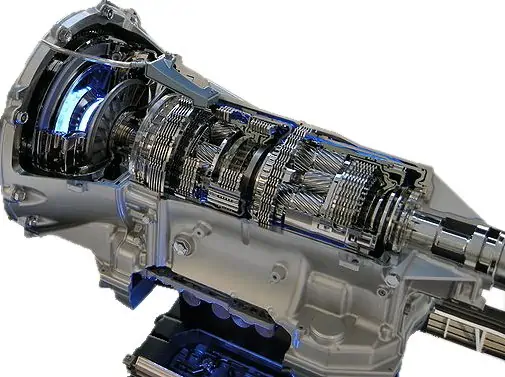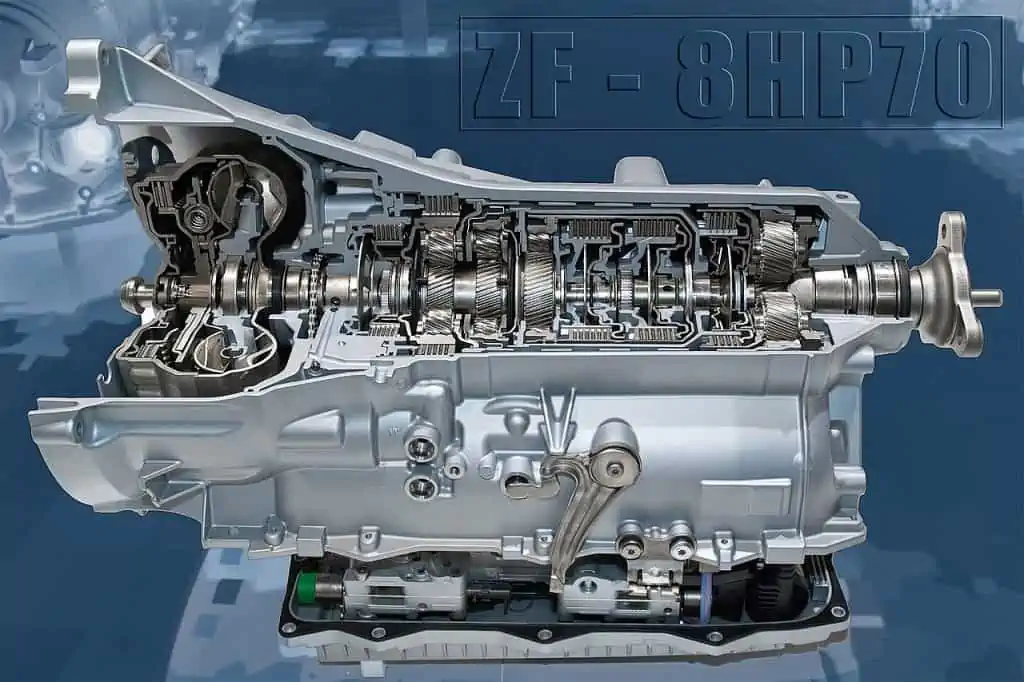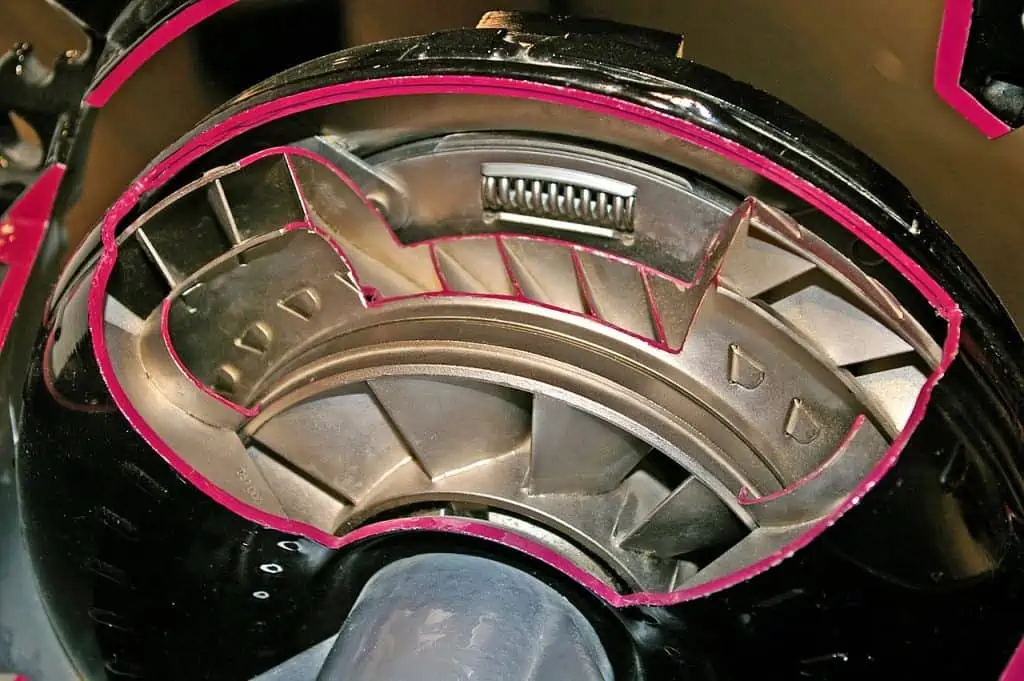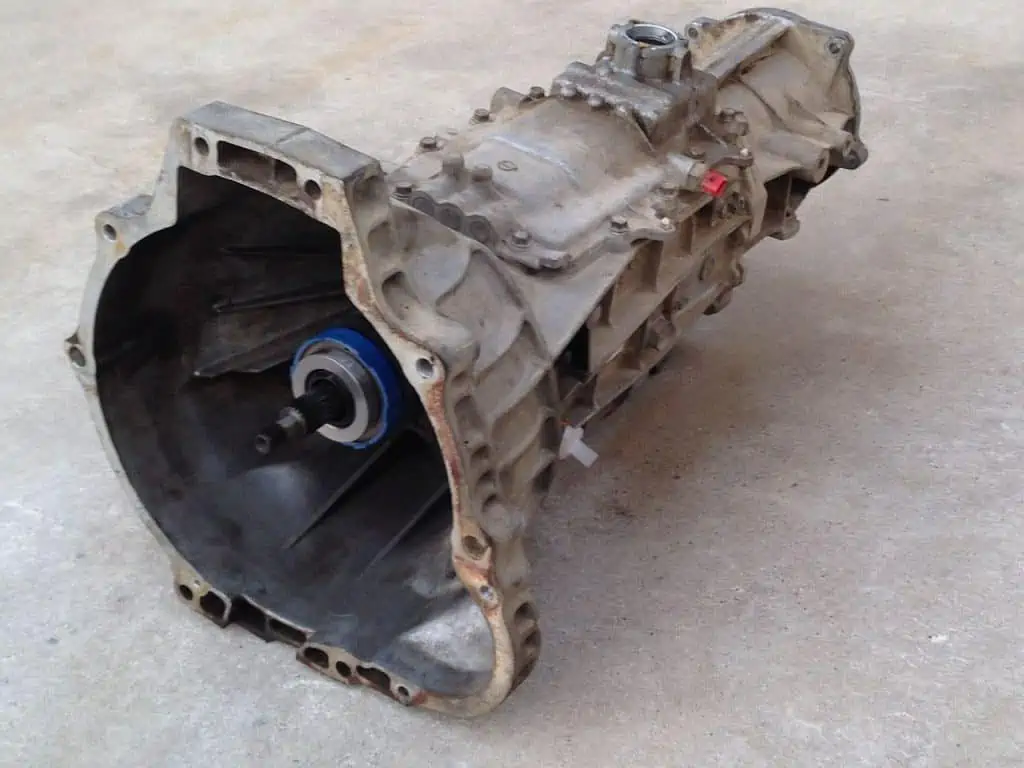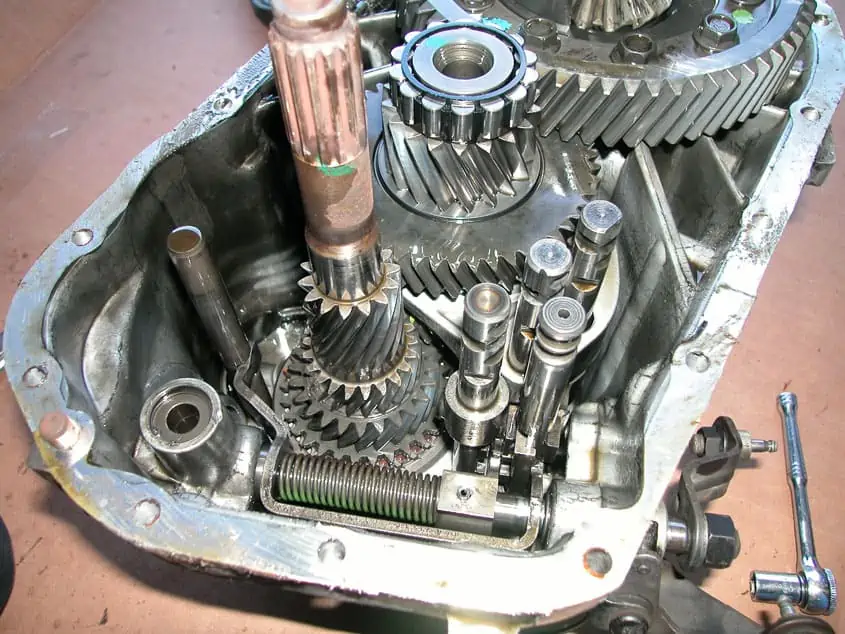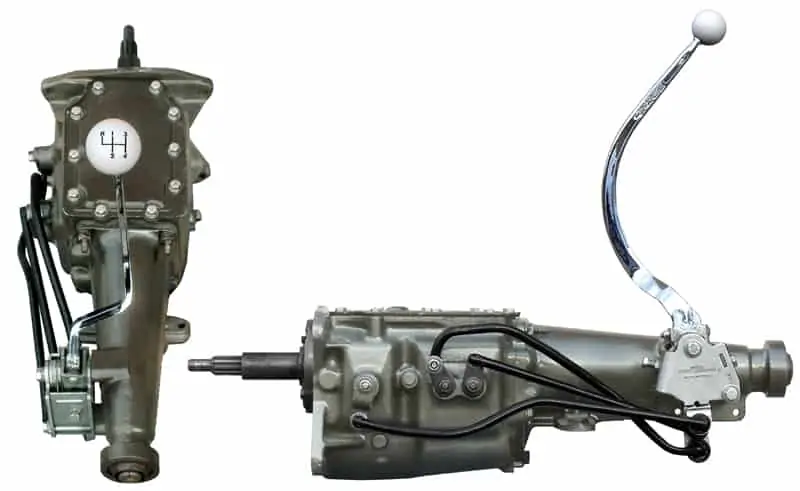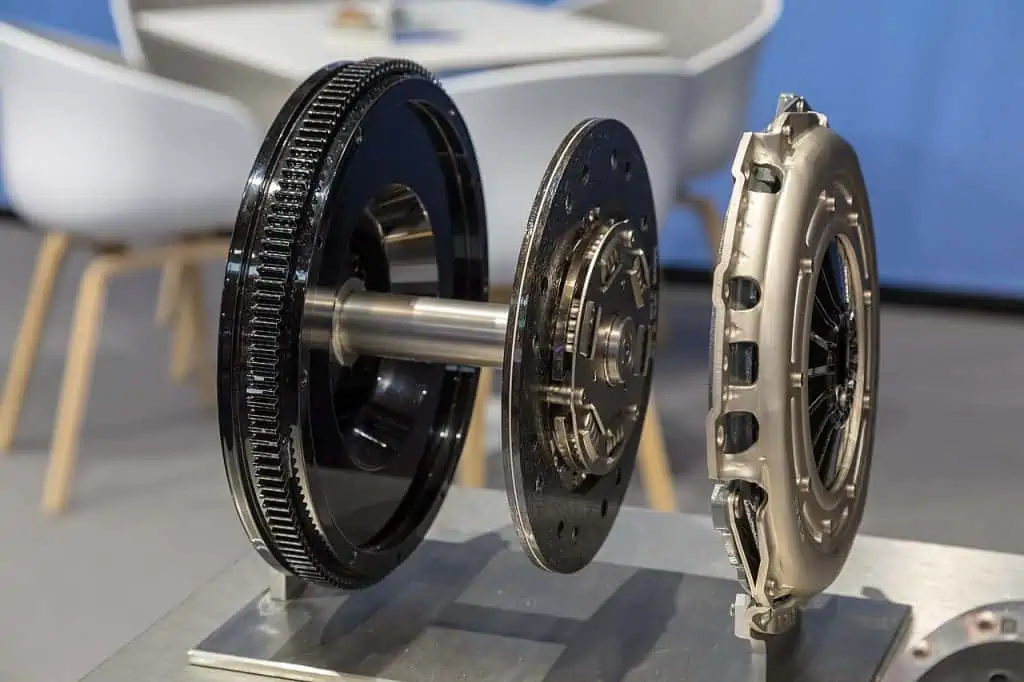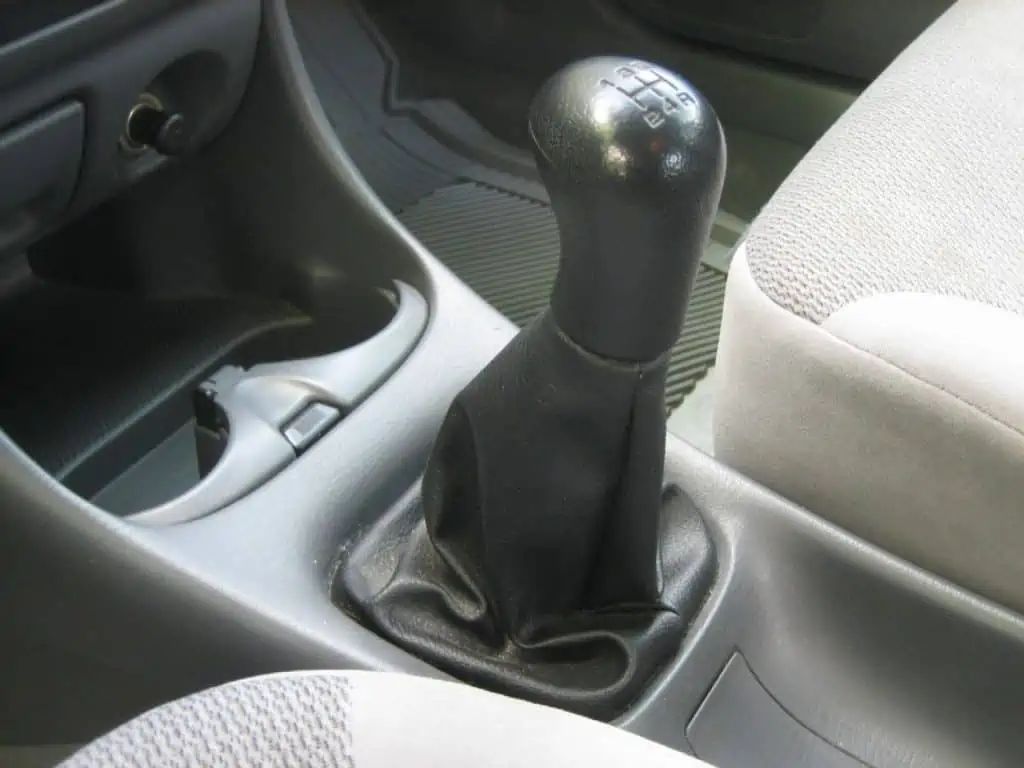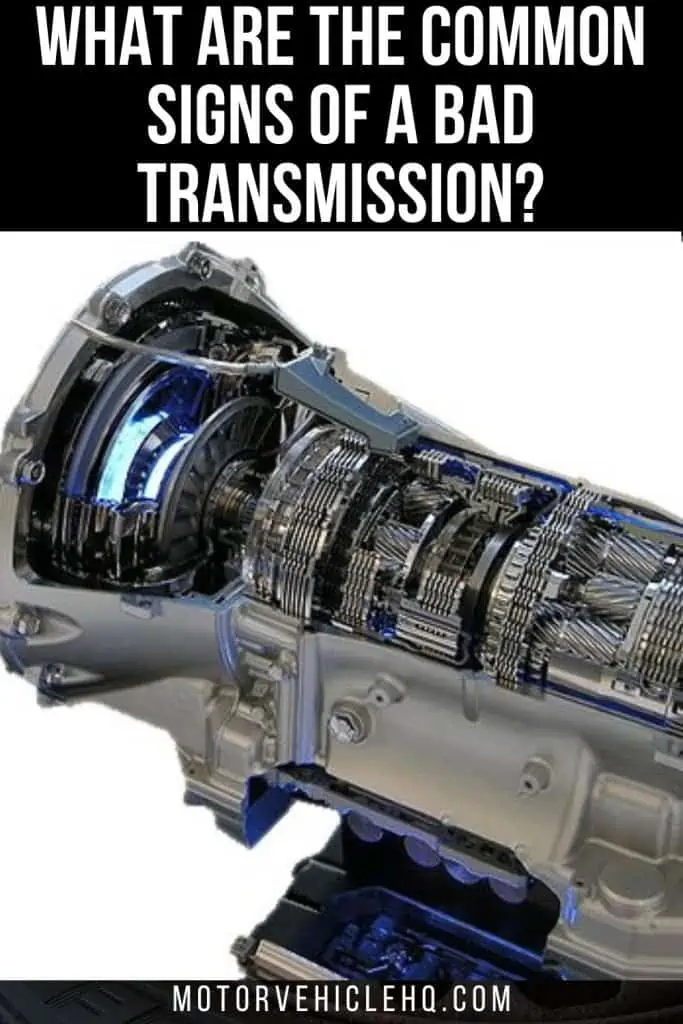Did you know that compared to all other mechanical parts in your car, the gearbox wears out the most? A vehicle’s transmission is equally as crucial as its engine in terms of performance.
Depending on speed and load, the gearbox must convert engine torque into usable power to turn the wheels of a vehicle at various gear ratios. Nobody likes to deal with transmission problems, though.
Many motorists would rather not be aware of the signs of a broken or rapidly failing gearbox. This explains why the gearbox is the most overlooked, misunderstood, and significant part of a car that gets little attention.
Ignoring issues won’t make them go away, as the adage says. If anything, it makes it more difficult to deal with them when they do come around.
We comprehend. Nobody would want their adversary to experience the hassle or cost of a transmission rebuild or repair. Avoiding the subject, though, won’t stop transmission problems.
However, you can extend the life of your transmission and save money by being aware of the signs of a faulty transmission before they manifest themselves and getting it to a skilled specialized repair shop.
Regular car maintenance and a fast check when something strange is discovered may frequently save costly repairs. A solenoid block or sensor, for instance, can be changed now for a small portion of the cost of a complete transmission rebuild a few weeks or months from now.
We provide ten signs of a bad transmission in this post for your information. Even though certain symptoms may fit into more than one category, you should still take any one or a combination of the previously mentioned symptoms seriously.
A Transmission: What Is It?
Your engine, whether it be a fuel-efficient four-cylinder or a Hemi with more than seven hundred horsepower, is unable to propel your car.
Automatic transmission by Silverxxx / CC BY-SA 3.0. If you don’t want to cope with the difficulties of manual transmission driving, an automatic gearbox is your best bet. because to transmit power to the wheels, the system increases the torque produced by the engine.
As the crankshaft of the engine revolves in tandem with the piston movement, the engine produces power in the form of torque. However, power must go to the wheels.
Your transmission is first and foremost responsible for that. To enable your vehicle to move at various speeds, it “transmits” torque from the engine to the remainder of the powertrain, to the axles, and to the wheels via a set of gears or belts.
The idea is comparable to how a bicycle’s gears enable a rider to simply begin in a low gear and change to higher speeds as speed rises.
There are manual and automated types of transmissions. With a manual gearbox, sometimes known as a “stick shift,” the driver must physically disconnect the transmission from the engine by depressing the clutch pedal.
Once “in gear,” an automated gearbox completes the entire task without the driver having to think about it. Even though there is a devoted following of manual gearbox drivers, barely 2% of passenger cars sold in the US have one. Most motorists like automatics for their convenience.
Which are the Different Car Transmission Types?
In a vehicle, a transmission, often known as a gearbox, serves as the conduit through which engine power is transferred mechanically through gears and gear trains to the wheels. Without a transmission, a person cannot apply power to a vehicle in a controlled manner; otherwise, the vehicle cannot move.
Higher gears assist achieve high speed by more efficiently utilizing the engine’s power, whereas lower ratios in a gearbox supply the necessary torque to accelerate. Despite the apparent simplicity of the function, a variety of transmissions are used to put the power into motion.
1. The Manual Transmission
The manual transmission is the best option if you want to feel more connected to your vehicle. In a car with a manual gearbox, the driver shifts the gears by using the clutch pedal and a gear stick that is located on the center console or the floor between the front seats.
For the most performance, power, and acceleration of the vehicle, manual gearbox driving is a skill that must be learned and practiced. Manual transmissions are the most fuel-effective form of transmission. However, how you drive will affect this as using your gears aggressively would result in poor mpg.
2. The Automatic Transmission
An automatic gearbox is the best option if you don’t want to deal with the complexities of manual transmission driving. Because the system amplifies the torque generated by the engine to transfer power to the wheels, these gearboxes are sometimes referred to as torque converter automatics.
The earliest type of automatic gearbox to be seen in vehicles is the torque converter transmission, which is a wonder of engineering.
The clutch pedal will not be present in a car with a torque converter transmission since the transmission system is powered by two turbines, one of which is linked to the engine and the other to the gearbox.
The power is transferred from the turbine on the engine side to the turbine on the transmission side by hydraulic fluid between the two turbines, which causes the vehicle to move.
Transmission: Torque Converter (left), Planetary Gearsets (center), Control Mechanisms (bottom) by Ritchyblack / FAL The gearbox uses a system of gears or belts to “transmit” torque from the engine to the rest of the powertrain, to the axles, and to the wheels, allowing your car to travel at different speeds.
Torque converter-equipped vehicles are easy to operate and provide enough torque for smooth acceleration. Although torque converters are more expensive than manual gearboxes, they are more fuel-efficient.
3. The Continuously Variable Transmission (CVT)
A chain belt connects two cones at each pulley of a CVT transmission system, and these cones may move to modify the belt’s diameter and hence the gear ratio. Due to this characteristic of CVT, the gearbox may instantly change between an endless number of gear ratios depending on the needs of the vehicle.
The fundamental benefit of a CVT gearbox is its ability to keep engine RPMs consistent even while the vehicle is moving at various speeds. This improves fuel efficiency and makes driving more comfortable.
One of the most economical automatic transmissions on the market is the CVT. If a CVT gearbox malfunctions, the greater repair costs would more than makeup for this expense.
4. The Semi-Automatic Transmission
The convenience and vehicle connectivity features of a manual and automatic transmission are combined in a semi-automatic transmission. Automated Manual Gearboxes (AMT) and clutchless manuals, such as the iMT from Hyundai, are examples of semi-automatic transmissions. There is no clutch pedal with a semi-automatic transmission, but there is a gear stick.
These gearboxes employ an actuator to activate the clutch at the ideal engine speed for seamless gearshifts. Their fuel economy is almost as good as manual transmissions because of their manual-like character, and the automatic feature makes them less tiring in stop-and-go traffic.
These automatic vehicles are more cost-effective than torque converters and CVTs, but because of the intricate clutch mechanism, they are still more expensive than manual gearboxes.
5. The Dual-Clutch Transmission
An automated gearbox that employs two clutches to change ratios is known as a dual-clutch transmission. Two gear sets, such as 1-3-5 and 2-4-6, are arranged in odd and even groups respectively in a DCT gearbox.
The odd set of gears is engaged by one clutch, and the even group by the other. As soon as the preceding gear enters its gear range, the twin clutches already have a gear engaged and ready to deploy. This system engages gears swiftly and smoothly.
A DCT gearbox is more expensive than the other transmissions listed yet is fuel-efficient for the same reason. Because of its extremely complicated design and operation, which drives up the cost, high-end vehicles typically utilize it.
What are Some Usual Signs of a Bad Transmission?
Do you suspect your car’s gearbox may be malfunctioning? The transmission of your car is essential to its smooth operation. However, you have a higher chance of avoiding transmission failure and expensive repairs if you spot a problem early enough.
To assist you with identifying possible issues before they become harmful, we’ve included some warning signs of a bad transmission below.
Torque converter by BerndB~commonswiki / CC BY-SA 3.0. In a car with a torque converter transmission, the clutch pedal won’t be present since the transmission system is driven by two turbines, one of which is connected to the engine and the other to the gearbox.
1. Failure to Respond
The inability or plain unwillingness to change into the appropriate gear is a surefire indicator that the gearbox is having issues. The inability to change gears may be mechanical, hydraulic, or electronic.
Occasionally, especially in cars with automatic transmissions, this may feel like a delay while switching from drive to park before the gear correctly engages.
When a vehicle has a manual gearbox, the lack of reaction frequently manifests as an imbalance between the engine’s RPMs and the actual vehicle speed.
In this instance, the vehicle’s anticipated acceleration appears to be substantially lower than what the sound of the engine would suggest. Some people call this “slipping” in the gearbox.
2. Weird Sounds
Depending on the brand and type of the car, different noises are made. Two questions should be taken into account when deciding whether or not to pay close attention to a certain sound:
Have you ever heard something like this before? You should have your car examined by your neighborhood transmission shop and a group of qualified transmission professionals if the noise is quite unusual.
Is there any humming, buzzing, whining, or clunking in the noise? These are most frequently used to describe sounds caused by transmission failure. A single bearing or even a worn case may cause an unsettling noise in a transmission, which has hundreds of components.
Sadly, these sounds cause more harm than just inconvenience. Failure of the transmission is the result. It is important to distinguish between automatic and manual transmission-specific sounds. Humming, buzzing, or whining noises are frequently produced by faulty automatic gearboxes; harsher mechanical noises, such as clunking, are produced by manual transmissions.
These noises can be related to the drive shaft, differentials, engine, exhaust system, or even a wheel bearing. It’s crucial to appropriately analyze the sound at this point.
3. Leakage of Fluid
Fluid leaks are noticeable and simple to identify. The transmission is kept alive with automatic transmission fluid (ATF). ATF lubricates the moving parts of the gearbox to reduce friction and stop overheating. Additionally, it serves as a hydraulic fluid to enable gear engagement.
If ATF leaks, the gearbox will run with insufficient fluid, increasing the likelihood of overheating. The easiest method for a transmission to fail is in this manner. Take your car as soon as you see a puddle of bright crimson fluid below it to a transmission repair.
Be aware that if the fluid is dark brown or black and smells scorched, it may be burned, and no amount of simple maintenance or repair work will be able to reverse the underlying failure.
However, if a transmission pan gasket is damaged, a transmission power flush and pan/gasket repair may usually solve the issue for a few hundred dollars as opposed to several thousand!
4. Jerking, Shaking, or Grinding Behavior
Jerking and shaking are clear signs of a bad transmission. In vehicles with a manual gearbox, gear grinding is a typical symptom. When shifting gears, automatic transmission failure frequently starts with some hesitancy.
Manual transmission by Typhoon / CC BY-SA 3.0. The clutch pedal and a gear stick that are positioned on the center console or the floor in front of the front seats are used by the driver to change the ratios in a manual transmission vehicle.
This may also be referred to as “slipping” by some. Eventually, shifting may cause the car to start shaking or trembling. These symptoms might also have other causes. The clunking and jerking between shifts is a common problems with engine and gearbox mounts.
The easiest approach to diagnosing the issue is to take your car to a repair professional right away to identify the real issue. Any delay will probably result in more harm.
5. Burning Odor
As was previously said, fluid leaks are a warning indicator. If, however, there is no leakage along with the burning smell, your transmission fluid is probably overheating as a result of sludge, metallic component degradation, and clutch debris.
This is a typical result on a car with over 100,000 miles if transmission fluid has not been cleaned or changed.
How will you be able to smell burned transmission fluid? ATF emits a distinctively pungent scent when it burns that is more akin to the smell of burning rubber than burning oil.
You may even see smoke if the transmission fluid becomes too heated. Once the fluid has burned, it is no longer able to control heat, lubricate moving parts, and hydraulically move gears.
6. Car Fails to Engage Gear
You could have experienced this awful situation: you’re stuck inside a stationary car with the motor running. The gears on your transmission won’t engage.
Cars swerve around you, honk, and miles of traffic are stopped. Any driver, regardless of prior experience, can envisage the scenario with a sickening sense of aversion.
What then is the problem? If your car won’t shift into gear, several problems might be to blame.
A few probable problems include the wrong kind of transmission fluid, the wrong positioning of the shift cable, a broken internal mechanic, a clogged filter, a broken clutch linkage, failed solenoids, failing sensors, or a broken computer system.
7. Service Engine Soon Dash Light Illuminates
The Check Engine Light on your car is intended to serve as an incredibly early warning system in addition to transmission problems. Never disregard this warning indicator or presume that it lit up for no apparent reason.
The service light on your dashboard is triggered by sensors that are strategically located within your car and detect small, odd vibrations that you might not notice while driving.
When the Check Engine Light comes on, it is important to bring your car to a repair facility you can trust straight away for an accurate diagnostic rather than waiting until it starts to shake and grind.
In some circumstances, a diagnostic code may indicate a modest fix that averts a big (and costly) fix. In other cases, the diagnostic code alerts the technician that a substantial repair (such as a rebuild or replacement of the transmission) is necessary.
8. Transmission Producing Noise In Neutral
Pay attention to how your transmission sounds when it is neutral. Do your transmission shakes or “bumps” at all? Some sounds, including this one, can be fixed easily by adding or replacing the automatic transmission fluid.
Over time, the transmission’s parts might degrade and cease to operate properly. Many things might be to fault for this, including extreme heat, a lack of lubrication, or just plain old age.
But other times, a more significant problem is present, and – as we’ve frequently emphasized – sending your car to a specialized repair shop is the most secure and economical choice. Although it may seem absurd, many Chrysler cars, including those from the Dodge and Jeep brands, must be inspected for fluids while in neutral.
9. Gear Slipping
Each of the aforementioned symptoms might be dangerous, but slipping gears is especially dangerous for nearby vehicles and pedestrians as well as the owner of the vehicle.
Often, a motorist must slam on the brakes or accelerate swiftly to avoid a hazardous scenario. A car that is unresponsive, shifts into neutral, or doesn’t respond at all is a severe safety risk.
It is now necessary for the sake of public safety to take your car to a reputable gearbox repair shop for inspection. Many contemporary gearboxes will enter “limp mode” or “safe mode” to stop a motorist from carelessly driving with a bad transmission.
In this case, the computer system will identify a transmission issue and switch to one gear by default. As a safety measure to enable the driver to transport the car to a nearby transmission shop, the vehicle won’t change gears and will only work in one ratio, frequently third gear.
10. Clutch Dragging
Only manual transmissions have dragging clutches, which make changing gear exceedingly challenging and occasionally impossible.
When the clutch pedal is depressed, the clutch disc and flywheel fail to disengage, resulting in a dragging clutch. A manual gearbox may occasionally “jump out” of gear as well. Often, while shifting gears, these problems are accompanied by grinding noises.
The hydraulics of the clutch pedal to clutch to flywheel engagement are frequently the cause of a transmission misdiagnosis, thus the master and slave cylinders must be investigated.
What Causes a Bad Transmission?
Numerous issues, including lower performance, poor fuel efficiency, and even total engine failure, can be brought on by a defective gearbox. But the concern that emerges in this situation is: What causes a bad transmission in a car?
- A car’s gearbox might malfunction for a variety of reasons. The simple act of wear and tear is one of the most frequent reasons. The components of the transmission may deteriorate and stop functioning correctly over time. Numerous factors, such as high heat, a lack of lubrication, or simply simple aging, may be to blame for this.
- Improper maintenance is another typical reason for a bad transmission. The transmission might overheat and malfunction if the vehicle is not properly maintained and the fluid is not replaced often.
- The transmission may also sustain damage if the vehicle is in an accident.
- A malfunctioning gearbox may occasionally result from a manufacturing flaw. Despite how infrequently it occurs, this does occur. The manufacturer might be able to fix or replace the gearbox if the vehicle is still covered by the warranty.
Is It Safe to Drive on a Bad Transmission?
Let’s say you’re asking if I can drive with a malfunctioning gearbox. This inquiry has a resounding “No” as the response. Driving with a damaged gearbox might result in many issues and eventually lead your vehicle to fail.
Dragging clutches are a unique feature of manual gearboxes that make shifting very difficult and occasionally impossible.
The performance of the vehicle might be impacted if the transmissions, which are in charge of transmitting power from the engine to the wheels, malfunction. Driving with a defective gearbox may also significantly damage the car’s components and potentially result in major accidents.
Expectations When Having a Bad Transmission Get Fixed
Your transmission repair might cost anything from $150 for a faulty solenoid to $8,000 to rebuild the complete gearbox, depending on the issue. As you can see, there is a large variation in both the cost and the severity of the issue.
Although this is a substantial sum of money, the good news is that you often do not need to replace your transmission entirely. Even if you require extensive repairs, a rebuild will generally suffice.
Rebuilding a transmission typically costs around $2,500. Again, this isn’t cheap, but a new transmission would cost much more.
However, if a problem is discovered quickly, you might just need a quick fix, such as a transmission fluid cleanse or replacement of the transmission position sensor. The usual costs for these tasks are $300 and $150, respectively.
Please be aware that these prices might change based on the kind of car you drive and the shop you use for repairs. Additionally, buying aftermarket components will probably cost you less money than buying an OEM replacement.
Normally, dealerships will charge you more for repairs than a neighborhood repair business. However, the dealership will have licensed mechanics with a ton of expertise working on your particular make and model of car.
Bringing your car in for maintenance and repairs is the only way to determine which end of the scale you fall on. Ignoring the issue will simply encourage you to make more costly fixes.
Whatever is incorrect will cause more things to go wrong and more components to be harmed if you ignore it.
How Can You Avoid a Bad Transmission?
You may take a few steps to prevent an expensive transmission replacement if your transmission is having problems. Even though once the damage has been done, it is typically irreversible, you may still take certain preventative measures to avoid transmission failure.
You can quickly and easily spot possible gearbox issues by keeping an eye on your car. Here are some pointers to keep your car’s gearbox from becoming damaged:
- Regularly check for fluid leaks.
- Make sure to schedule routine maintenance for your car.
- The check engine light should not be ignored.
- Keep an ear out for odd noises.
- If you detect any odd odors, bring your car to a repair facility.
You should never operate a car with a gearbox issue, regardless of how minor the issue may seem. The results might be disastrous if gear changes don’t go as anticipated. We always suggest that car owners get in touch with a reputable repair facility right away.
Exploded view of a flywheel, friction disk, and clutch kit by Matti Blume / CC BY-SA 4.0. The clutch disc and flywheel do not disengage when the clutch pedal is squeezed, causing the clutch to drag. A manual gearbox could also “leap out of gear.” These issues frequently produce grinding noises while shifting gears.
1. Check Transmission Fluid Levels Regularly
You should frequently replace your transmission fluid, much like you would with your oil. Even if it does persist for a long, it is temporary, and ignoring it will eventually result in transmission failure.
How frequently should the transmission fluid be changed?
The only practical solution is to double-check your owner’s handbook, albeit the majority of manufacturers advise doing so every 30,000 to 60,000 miles.
2. Be Conscious of Extreme Transmission Use
If you examine two similar transmissions that have been driven differently, the one that has been mistreated will be in much poorer form.
By “severe” or “abuse,” we refer to actions like repeatedly hard-accelerating in city traffic or frequently pulling a hefty load. further to often (more than 50% of the time) driving in the heat.
By replacing the transmission fluid more frequently, such as every 30,000 miles, you may increase the lifespan of your transmission in any of these scenarios.
3. Take Care of Your Cooling System
A transmission has several moving elements, which naturally generate heat. The cooling device reduces the temperature of the tranny fluid before it hits the gearbox, preventing overheating. This implies that if there is a problem, it cannot do its function.
You may as well include your cooling system on the list if you want to prolong the life of your transmission.
Several methods for doing this include:
- Preserving proper coolant levels.
- Keeping an eye out for leaks.
- Looking for color differences
4. Use Caution When Changing Gears
Unfortunately, because your transmission is a very intricate part, it is also somewhat sensitive. A lot of harm may be done by actions like putting the car in Park before coming to a complete stop, cycling through overdrive, or putting it in reverse while you’re moving.
Additionally, always use the emergency stop when parking your vehicle uphill. By doing this, you can avoid damaging the gearbox while releasing the parking brake since the weight of the car is kept off of it.
Be careful and gentle with it or you can end up with a large transmission repair fee.
The Conclusion
It’s possible for your car’s handling to suffer when your transmission fails. If this problem persists, you can see vibrations or other shift patterns occurring in previously impossible ways.
The clutch pedal and a gear stick that are positioned on the center console or the floor in front of the front seats are used by the driver to change the ratios in a manual transmission vehicle.
If these symptoms are present and the engine compartment of the car can confirm them, then it is probable that one or more gears in the automatic transmission system have broken down (which could be related to fluid pump issues).
Take your car in for an inspection if you notice any of these symptoms. Repairing a transmission issue may be costly and troublesome. Therefore, it’s crucial to get your car checked out right away if you see any of the symptoms we’ve described.

Automatic transmission by Silverxxx / CC BY-SA 3.0

Jim Wicks is the founder of MotorVehicleHQ. With over two decades of experience in the automotive industry and a degree in Automotive Technology, Jim is a certified car expert who has worked in various roles ranging from a mechanic, car dealership manager, to a racing car driver. He has owned more than 20 cars over the past 15 years. Ask him about any vehicle you see on the road and he can tell you the make, model and year. He loves the aesthetics of all things cars, and keeps his vehicles in pristine condition.
In his free time, Jim enjoys getting his hands dirty under the hood of a classic car or taking long drives along the country roads. His favorite car? A 1967 Shelby GT500, a true classic that, according to Jim, “represents the pure essence of American muscle.”
